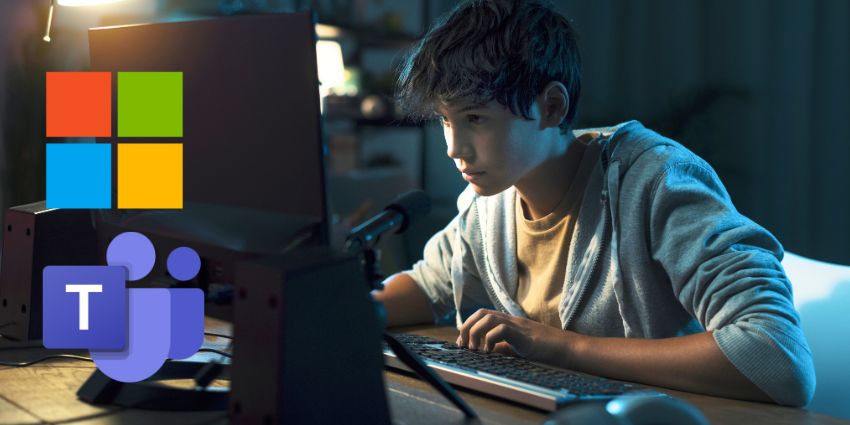Microsoft has recently announced that a 17-year-old has become one of the company’s most valuable independent researchers through its Microsoft Security Response Center (MSRC).
The teenager, Dylan, has filed over 20 vulnerabilities, earned a top-three finish at Microsoft’s Zero Day Quest, and fundamentally changed Microsoft’s security policies.
However, despite the teenager’s already young age, he actually first came onto Microsoft’s radar when he was just 13, after finding a critical vulnerability with its UC platform, Teams.
A Teenage Protege
Dylan’s journey with the company began during the COVID-19 lockdown. His focus on Teams that later led to his discovery occurred because his school disabled students’ ability to create Microsoft Teams meetings. Dylan found a workaround using Outlook to help classmates stay connected.
When student-created Teams chats were subsequently blocked, Dylan spent nine months teaching himself security research fundamentals and discovered a critical flaw that allowed full control over Teams groups.
However, rather than exploiting this vulnerability maliciously, he responsibly disclosed it to Microsoft – a decision that would reshape the company’s entire bug bounty program.
His first major find was so well-received that it didn’t just earn him accolades; it led Microsoft to rewrite the rules of its bug bounty program to allow teenage researchers as young as 13 to participate.
Since then, he has contributed as an independent researcher to Microsoft. His contributions have been so significant that he appeared on MSRC’s Most Valuable Researcher list in 2022 and 2024, demonstrating the tangible impact of Microsoft’s collaborative security approach.
This policy change that allowed a teenager like Dylan to contribute to the security posture of Microsoft reflects the company’s belief that valuable security insights can come from unexpected sources, and that fostering a diverse research community strengthens overall security posture.
The Power of Community-Driven Security
While a 13-year-old successfully identifying vulnerabilities in Microsoft Teams might initially seem concerning, it actually highlights the robust security ecosystem Microsoft has cultivated through its community programs.
The company has significantly increased its emphasis on these programs over the past five years, creating both public and private communities that enable customers and researchers to connect directly with Microsoft engineers and security professionals.
These community programs serve dual purposes: they provide platforms for sharing best practices and emerging threats while positioning customers and researchers at the center of product development.
Microsoft’s public communities require no prerequisites, making security research accessible to anyone interested in learning about vulnerabilities and developing expertise. Meanwhile, private communities offer deeper engagement opportunities for professionals with active Non-Disclosure Agreements, providing access to roadmaps, focus groups, and private preview features.
The success of Dylan’s engagement demonstrates how these community-driven approaches can identify critical vulnerabilities that might otherwise remain hidden.
By creating structured pathways for responsible disclosure and maintaining ongoing relationships with researchers, Microsoft transforms potential security threats into opportunities for proactive improvement.
After all, by opening up its pen testing beyond its thousands of employees, Microsoft is more likely to cover far more ground. With Microsoft and Teams being reported as the market-dominant forces in UC and collaboration, that makes up a considerable number.
This collaborative model ensures that platforms like Teams benefit from continuous security testing by a diverse range of researchers, from seasoned professionals to talented teenagers.
Microsoft’s Unprecedented Security Investment
Microsoft’s response to Dylan’s discoveries and other security challenges reflects the company’s commitment to making cybersecurity one of its top pillars.
Following a number of high-profile security failures -including the Storm-0558 cyberattack and various Teams-targeted attacks – the company has gone full force with its security initiatives.
This includes establishing a new Cybersecurity Governance Council and appointing 13 deputy CISOs. Equally, this weekly senior leadership review examines the progress of Microsoft’s Secure Future Initiative (SFI). The SFI, dubbed “the largest cybersecurity engineering project in history,” dedicates the equivalent of 34,000 full-time engineers to address high-priority security tasks.
This massive investment demonstrates Microsoft’s recognition that security is becoming increasingly vital, particularly for mission-critical platforms like Teams that serve as communication backbones for organizations worldwide.
The SFI encompasses comprehensive security principles and objectives, emphasizing Microsoft’s commitment to strengthening cybersecurity across all products and services.
The company has also linked security goal fulfillment with executive compensation, and internal memos indicate that substantial security-focused work now impacts every worker’s salary increases, promotions, and bonuses.
These structural changes ensure that security considerations permeate every aspect of Microsoft’s operations, from initial product design to ongoing maintenance and updates.
For UC platforms like Teams, this means security is embedded throughout the development lifecycle, not just added as a final layer of protection.
Collaborative Security as a Competitive Advantage
Dylan’s journey from a 13-year-old discovering Teams vulnerabilities to becoming one of Microsoft’s most valuable security researchers illustrates how collaborative security approaches can transform potential weaknesses into competitive advantages.
By embracing community-driven security research, investing unprecedented resources in cybersecurity, and maintaining transparency about vulnerabilities and improvements, Microsoft has created a security ecosystem that continuously evolves to address emerging threats.
While the company has certainly faced significant security challenges, its willingness to engage with researchers of all backgrounds, rewrite policies to accommodate valuable contributors, and invest massively in security infrastructure demonstrates a commitment that extends far beyond compliance requirements.
For organizations evaluating UC platforms, Microsoft’s approach provides confidence that Teams and related services benefit from one of the industry’s most comprehensive security research ecosystems.







